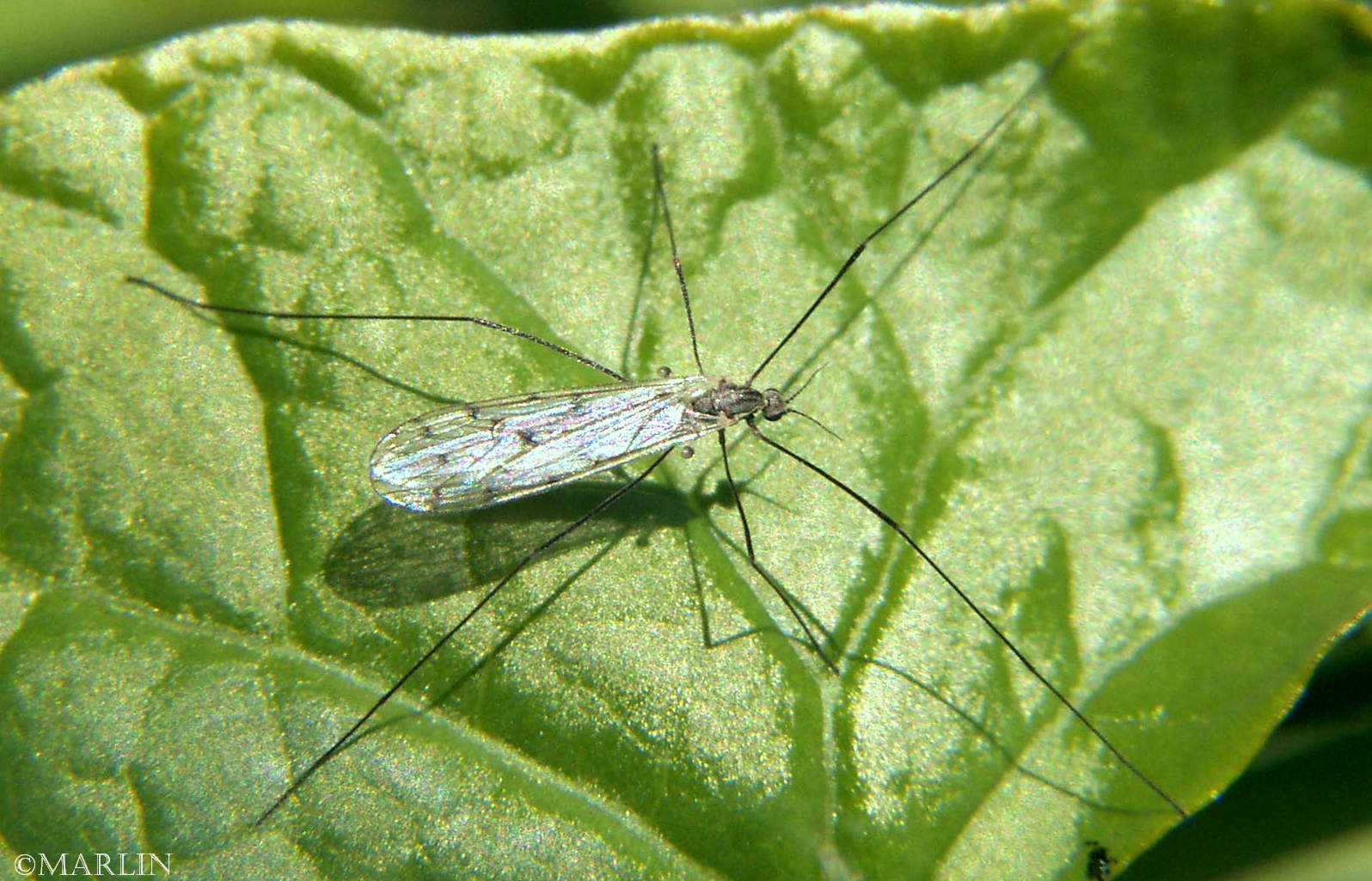Crane Fly – Erioptera (Symplecta) cana
 This specimen was photographed May 15, 2005 near the banks of the DuPage River, West Branch near Winfield IL.
This specimen was photographed May 15, 2005 near the banks of the DuPage River, West Branch near Winfield IL.
Adults of this small (6-7 mm) gray crane fly are the first species to appear in the spring, when most vegetation has not yet started growing. They are common and abundant in the spring in nearly all wooded habitats and open grasslands. The fall generation is less conspicuous. The larval stages are found in saturated earth along water edges. There is only one species in this genus found in North America. This species is wide spread throughout North America, as far south as the mountains of Central America.*
Although individual adults have a relatively short life span of 10 to 15 days, the flight period for each species can last from 25-30 days. The main functions of the adult stage are mating and egg-laying. Feeding is less important, and probably water is the most pressing need. Species with elongated rostrum (Geranomyia, Elephantomyia, Toxorhina) have been reported visiting flowers, probably for nectar.
Family Tipulidae – crane flies, tipules
Tipulidae is the largest family of Diptera with about 1,500 species in North America
Flies Main | Flies Index | Tachinidae | Syrphidae | Bee Flies | Blow Flies | Flesh Flies
